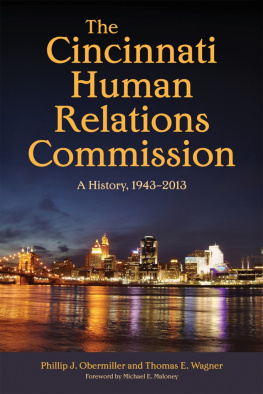
This edition is published by PICKLE PARTNERS PUBLISHINGwww.picklepartnerspublishing.com
To join our mailing list for new titles or for issues with our books picklepublishing@gmail.com
Or on Facebook
Text originally published in 1997 under the same title.
Pickle Partners Publishing 2014, all rights reserved. No part of this publication may be reproduced, stored in a retrieval system or transmitted by any means, electrical, mechanical or otherwise without the written permission of the copyright holder.
Publishers Note
Although in most cases we have retained the Authors original spelling and grammar to authentically reproduce the work of the Author and the original intent of such material, some additional notes and clarifications have been added for the modern readers benefit.
We have also made every effort to include all maps and illustrations of the original edition the limitations of formatting do not allow of including larger maps, we will upload as many of these maps as possible.
BOMBING TO SURRENDER: THE CONTRIBUTION OF AIR POWER TO THE COLLAPSE OF ITALY, 1943
By
PHILLIP A. SMITH MAJOR, USAF
TABLE OF CONTENTS
Contents
TABLE OF CONTENTS
REQUEST FROM THE PUBLISHER
Illustrations
Figure 1. Pantelleria after aerial bombardment
Figure 2. Rome after aerial bombardment
Tables
Table 1: First Rome Raid Summary
ABOUT THE AUTHOR
Major Philip A. Smith (BS, Aerospace Engineering, University of Arizona; MAS Aeronautical Science, Embry-Riddle Aeronautical University; MA, National Security and Strategic Studies, Naval War College) received a regular commission as a distinguished graduate from the Air Force Reserve Officer Training Corps, University of Arizona in 1984. After graduation from Undergraduate Pilot Training at Reese AFB in 1985, his first assignment was as a Forward Air Controller/Battalion ALO flying OV-10s at George AFB. He subsequently flew F-111s at RAF Lakenheath and Upper Heyford from 1990 to 1993, flying 31 missions in support of operations DESERT SHIELD/DESERT STORM and 17 missions in support of operation PROVIDE COMFORT. Major Smith returned in the states to fly the F-117 from 1993 to 1995. As a senior pilot with 2600 hours, he has been awarded a Distinguished Flying Cross, Meritorious Service Medal, and three Air Medals. He was a distinguished graduate from Squadron Officer School, completed Air Command and Staff through correspondence, and graduated with highest distinction from the College of Naval Command and Staff. Upon graduation from the School of Advanced Air Power Studies, Maxwell AFB, Alabama, he will be reassigned to Headquarters Air Force, Strategy Division, Chief of Fighter Branch, at the Pentagon. Major Smith married the former Julia Richardson and they have two beautiful daughters, Cassandra and Kylie.
Acknowledgments
I must thank all the people who made this work possible. First, I am especially grateful for my advisor, Professor Denny Drew and my reader, Professor James Corum, as well as the faculty at the School of Advanced Airpower Studies at large. Their review of my drafts, jocular encouragement, and research vectors prevented my personal morale collapse from the chaotic magnitude of this project.
Furthermore, I would like to thank some people who often make the difference, but are seldom remembered. High on this list is Mr. Dave Keogh, assistant archivist at Carlisle Barracks, Pennsylvannia. He turned a three-day trip to the United States Army Military Historical Institute into a frenzied research whirlwind. I would also like to thank Ms. Diana Simpson, assistant researcher at the Fairchild Library, Maxwell Air Force Base, Alabama. Her cheerful and generous alacrity, even at the end of a long the day, earned my esteem.
Finally, I am deeply thankful for the understanding and support of my wife and children. I am forever in debt to Julie, who knows me too well, as well as my two darling daughters who, at their young age, contributed far more than they will ever know.
All this being said, I dedicate this essay to those unfortunate Italians of 1943 and Iraqis of 1991. They were not the masters of their fate, as their masters fated them to die. I pray we learn the lessons that might make their sacrifices meaningful.
Preface
Aerospace doctrine is, simply defined, what we hold true about aerospace power and the best way to do the job in the Air Force. It is based on experience, our own and that of others. Doctrine is what we have learned about aerospace power and its application since the dawn of powered flight. While that can be applied without modification to present and future situations, it does provide the broad conceptual basis for our understanding of war, human nature, and aerospace powerIt is the starting point for solving contemporary problems. Air Force Manual 1-1, page 1
In the examining any military strategy, it is impossible not to discuss military doctrine. Discussing doctrine, specifically its definition and application, leads to passionate debates. Among military professionals of various services and learned academicians of many institutions, even the definition of doctrine differs by degrees in both its fundamental purpose and in its application of the military instrument of national policy. Since this is a study largely about competing air power strategies during World War II, I would like to present my own view of this fifty year-old debate.
For this author, air power doctrine comes in two divisions of the classic who, what, where, when, why, and how. The organizational doctrinal division is the why, who, and what is one form of doctrine which involves service roles and missions and thus force structure. The employment doctrinal division is the where and how is another form of doctrine which is the art of how the resultant military organization achieves its objectives. Although there is an interaction between these two divisions. In peace, generally questions about the first doctrinal division seem to overshadow those of the second division. In war, the reverse is true as the challenges and experiences of war change the repertoire of the military practitioners. This is not, however, always the case.
Especially for air forces, because of the infancy of flight and tempo of technological change, new employment doctrine can precede changes in organizational doctrine. As an example, consider the development of strategic bombing doctrine prior to World War II. Visionaries such as Douhet, who believed the independent air force bombing enemy cities could break the will of an adversary, competed with concepts from the Air Corps Tactical School (ACTS), which believed victory could be achieved by destroying critical production centers of an industrialized nation at war-later popularized in the Disney movie Victory through Air Power. Nevertheless, both visions of Douhet and ACTS saw the need for the development for an entirely new weapon system, a large four-engine bomber, a Flying Fortress, to perform strategic bombing. This new war-winning employment doctrine, in turn, led to the call for a new organization, the United States Air Force. In the test of total war, neither strategic doctrine was as decisive as envisioned. More than fifty years of experience later, the doctrine and efficacy of strategic air power is still a matter of debate.










